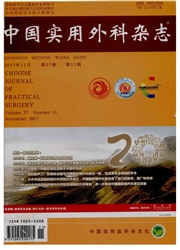

 中文摘要:
中文摘要:
目的探讨肝移植术后病人真菌感染的菌群变化特点和相应的防治策略。方法回顾性分析中山大学附属第三医院肝移植中心2004—2005年485例原位肝移植病人术后真菌感染的流行病学资料和药敏结果。结果485例病人中79例出现术后真菌感染,真菌感染率为16.3%,共分离出菌株88株,其中念珠菌71株(白色念珠菌35株,非白色念珠菌36株),曲霉菌17株,在菌群分布上2004年和2005年差异有显著性(P〈0.05)。念珠菌对氟康唑的耐药率2005年(60.0%)较2004年(33.3%)明显上升(P〈0.05)。结论肝移植术后非白色念珠菌和曲霉菌感染的比例逐渐上升,临床上应根据分离培养结果选择适当的抗真菌药物。
 英文摘要:
英文摘要:
Objective To investigate the distribution of fungal infection and the corresponding prevention and treatment after liver transplantation. Methods Epidemiology data and susceptibility test of 485 cases of orthotropie liver transplantation were retrospective analyzed between 2004 and 2005. Results 88 fungi strains were isolated in 79 patients and the infection rate was 16. 3%. Among them 71 strains were albicans in which 35 strains Candida albieans and 36 strains other Candida albieans, 17 strains were aspergillus. There was significant difference in the distribution of fungi between 2004 and 2005 ( P 〈 0. 05). The resistence of albieans to flueonazole in 2005 (60%) was significantly higher than that in 2004 (33.3%)( P 〈0. 05). Conclusion The percentage of other Candida albicans and aspergillys is increasing, We should select appropriate anti-fungal drug according to the cultivation.
 同期刊论文项目
同期刊论文项目
 同项目期刊论文
同项目期刊论文
 期刊信息
期刊信息
